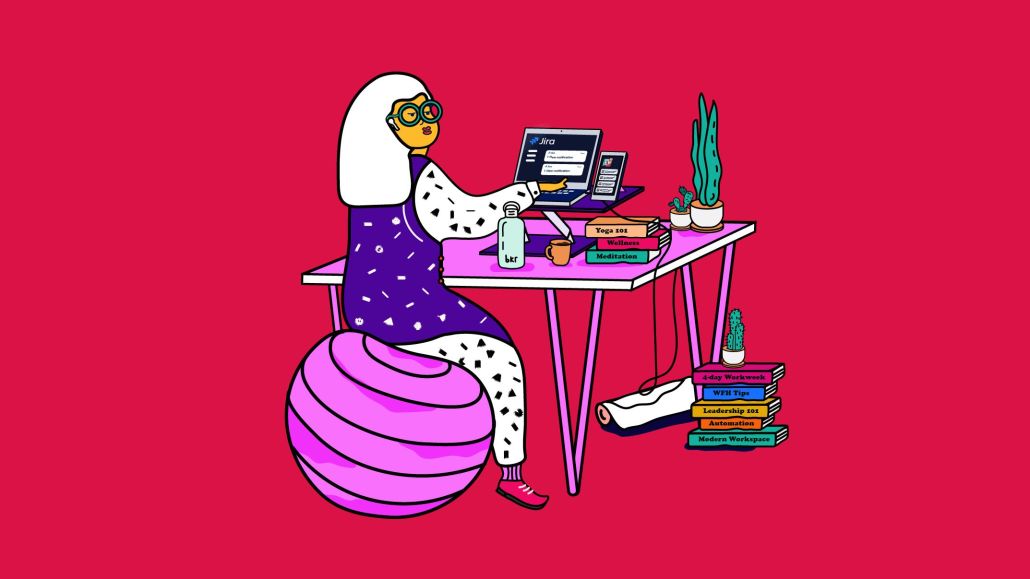‘Deskercises to alleviate aches and pains’: Employees’ physical comfort in remote work set-ups crucial, experts say

Ergonomics experts must be losing their minds.
They are witnessing employees working off their beds, sitting in uncomfortable chairs and even on the floor; tapping away on laptops that were not designed to be used eight (or more) hours a day.
Before the pandemic many companies invested heavily in ergonomics and occupational health. They understood that if workers are comfortable, they are more productive and efficient.
So what has happened to workstation health and safety as knowledge workers have moved to a home-based set-up?
Ergonomic professionals have pointed to a rise in neck and upper body discomfort from using laptops and uncomfortable furniture, while too much screen time is fuelling mental as well as physical health problems, according to various reports.
The impact can be more sickness and absenteeism, less productivity and an overall negative impact on workers’ wellbeing.
With the post-coronavirus return seemingly on the horizon, many people are considering a more hybrid approach to work, and this will bring pressure on companies. They will need to demonstrate that they are investing as much time and money in the health of workers when they are at home, as they do when they are in the office.
Ad position: web_incontent_pos1
This means carrying out a suitable assessment of someone’s remote working environment.
This should cover everything from the furniture and equipment being used, to factors such as isolation, overwork and a failure to take proper breaks. It is recommended that employees take a five minute break every hour and stand up or move around regularly.
Other things to check include ensuring the computer has a flicker-free screen and that an employee’s eyes are level with the top of it. Also, is the chair adjustable, does the employee need a footrest and is the worker too reliant on hand-held devices and working for hours from a small screen?
International media agency Wavemaker Global has stressed to its employees the importance of assessing and re-assessing their home work space. The agency allows staff to expense certain equipment, while individuals can arrange for their ergonomic office chair to be moved to their home.
“We’ve collated a library of resources to offer guidance on work station set-up, ergonomics, productivity and provided useful information from IT,” said Wavemaker Global’s chief people officer Simon Prior. People can request a remote desk assessment from someone trained to make ergonomic checks and get one-to-one support and advice, according to Prior.
Ad position: web_incontent_pos2
“We advise on how to work from home without hurting your back, neck and arms. We have also provided some helpful ‘deskercises’ to alleviate aches and pains,” he added.
San Francisco-based people management software company 15Five has shifted to an all-remote environment. Chief culture officer and co-host of the HR Superstars Podcast, Shane Metcalf, said the move has demonstrated to everyone the importance of self-care, particularly when it comes to mental health.
He said it is crucial employers continue to collaborate with employees on workstation health and safety as people mix office and home working. This means providing the right training, tools and support.
“Organizations should do more to support their people’s health at home — both physical and mental,” said Metcalf. “Employers should reward better sleep, encourage time off and destigmatize therapy and counselling. If people are treated as humans rather than simply employees they will feel more in tune with their natural selves. It will leave them more energized and excited to work, not to mention grateful for an employer who is actively supporting them.”
Yet while employers obviously have a duty of care, it is also important that employees take personal responsibility for their health if they want to continue to work from home.
Los Angeles medical advertising agency Bryant Brown was a pioneer in working remotely and has operated a virtual model for 20 years. Partner Bob Brown said the company does not assess its team members’ home office workstations, although help is available.
The company reimburses for all reasonable expenses associated with making those work stations as efficient and comfortable as possible, such as computer equipment, office supplies, furniture, lighting and so on, according to Brown.
“Personal responsibility is critical in every situation, but especially with our model,” he said. “No-one is looking over anybody else’s shoulder. No-one is monitoring each team member’s schedule or the workstation process that each team member implements. It takes a certain kind of individual to uphold that personal responsibility.”
More in Marketing

In the marketing world, anime is following in the footsteps of gaming
As marketers look to take advantage of anime’s entry into the zeitgeist, they might be wise to observe the parallels between the evolution of anime as a marketing channel and the ways brands have learned to better leverage gaming in recent years.

With the introduction of video ads and e-commerce, Roblox looks to attain platform status
Roblox is expanding into more areas than just ads in 2024. Much like platforms such as Amazon and Facebook have transcended their origins to evolve from their origins as online marketplaces and social media channels, Roblox is in the midst of a transformation into a platform for all elements of users’ virtual lives.

PepsiCo wants to remain a ‘driver of culture’ as it turns to influencers and activations amid rebrand
The soda-maker says it can translate cultural relevance into sales volume.
Ad position: web_bfu



